Directions (1-5): Table given below shows the ratio of male to female and total population of different states in 2011 and 2012.
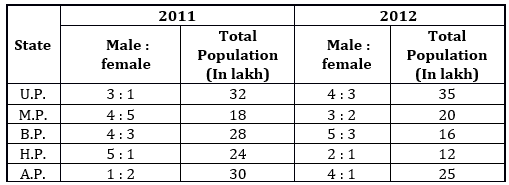
Q1. What was total number of males in U.P. in year 2011 and females in same state in year 2012? (in lakhs)
(a) 39
(b) 29
(c) 34
(d) 49
(e) 44
Q2. What is the ratio of total number of females in H.P. in both years to the total number of females in B.P. in both years?
(a) 4 : 7
(b)2 : 3
(c)4 : 9
(d)5 : 9
(e) 9 : 4
Q3. If male of M.P. in year 2011 are of three category i.e. General, OBC and SC which are in ratio 3 : 3 : 2. Then find the difference between males of General and SC category.
(a) 2 lakh
(b) 1 lakh
(c) 3 lakh
(d) 1.5 lakh
(e) None of these
Q4.Male in state B.P. in year 2012 is what percent more or less than that of male in same state in year 2011 ?
(a) 30%
(b) 40%
(c) 35%
(d) 37.5%
(e) None of these
Q5. If 24% of males of state A.P. in year 2012 went to state U.P. in same year, then what is the percentage increased in the population of state U.P.?
(a) 16.04%
(b) 8.08%
(c) 22.60%
(d) 24%
(e) 13.71%
Directions (6- 10): Study the table given below carefully and answer the given question
The table shows five shopkeepers who sell three different products.
Note: The shopkeeper sells only these three products.
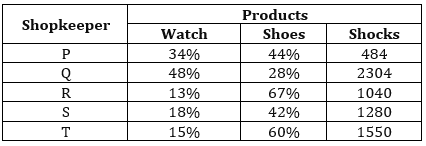
Q6. Number of watches sold by shopkeeper P is how much more or less than the number of shocks sold by shopkeeper T?
(a) 812
(b) 802
(c) 902
(d) 822
(e) None of these
Q7. What is the ratio of number of watches and shoes sold by shopkeeper Q and number of watches and shoes sold by shopkeeper S?
(a) 19 : 5
(b) 5 : 19
(c) 17 : 6
(d) 6 : 17
(e) None of these
Q8. If 4/5th of the shoes which are sold by shopkeeper T are defective then how many shoes he sold which are not defective?
(a) 784
(b) 844
(c) 744
(d) 764
(e) None of these
Q9. Total number of products sold by shopkeeper S is approximately what percent more or less than total number of products sold by shopkeeper R?
(a) 42%
(b) 38%
(c) 46%
(d) 64%
(e) 52%
Q10. Watches and shocks sold by shopkeeper R is what percent of watches and shoes sold by shopkeeper P?
(a) 0%
(b) 25%
(c) 50%
(d) 75%
(e) 100%
Directions (11-15): Study the following table carefully and answer the questions given below.
Table shows the 4 schools in which total number of enrolled students in each school is given and percentage of enrolled students who are learning Indian Classical and ratio of male to female students who are learning Indian classical are given.
Note: All students of given schools are involved in singing.

Q11. What is the ratio of the total number of male students learning Indian Classical in school P and S together to the total number of female students learning Indian Classical in the same schools together?
(a) 30 : 37
(b) 31 : 38
(c) 31 : 44
(d) 36 : 37
(e) 29 : 15
Q12. In school Q, out of the total number of students (both male and female) learning Indian Classical, 1/9 are below 17 years of age in which 50% are females, then what is the number of female students learning Indian Classical who are 17 years or above?
(a) 24
(b) 18
(c) 36
(d) 15
(e) 12
Q13. What is the difference between the total number of male students learning Indian Classical in schools Q and R together and the total number of female students learning the same in the same schools together?
(a) 78
(b) 74
(c) 81
(d) 86
(e) 84
Q14. What is the average number of students learning singing (other than Indian Classical) in school P, Q and R together?
(a) 289
(b) 277
(c) 285
(d) 283
(e) 273
Q15. The number of students (both male and female) who are learning Indian Classical in school Q and S together is approximately what per cent less than the number of students (both male and female) who are learning the same singing in schools P and R together?
(a) 18
(b) 42
(c) 22
(d) 57
(e) 33
Solutions
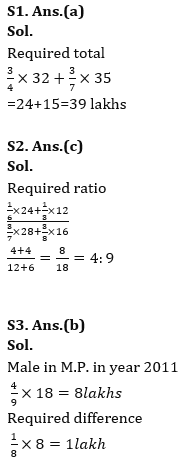
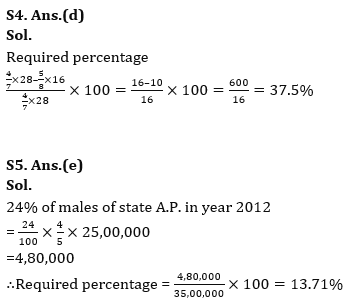
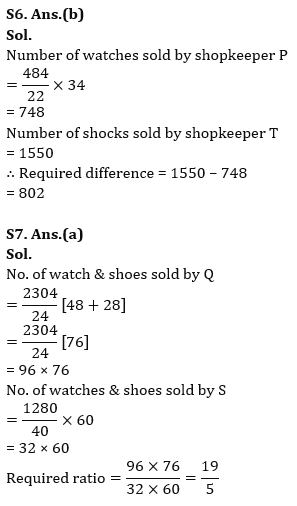
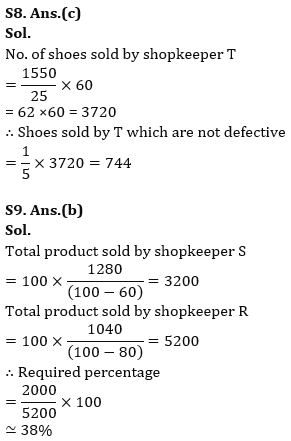
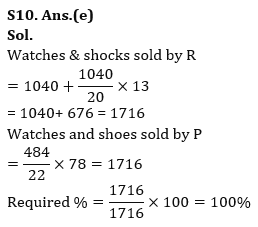
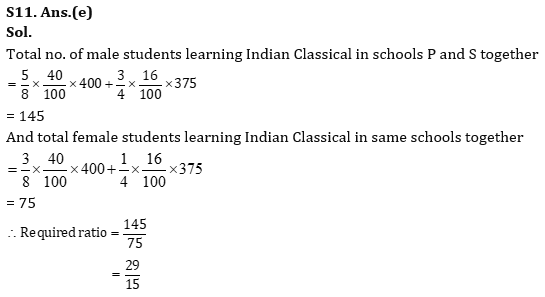
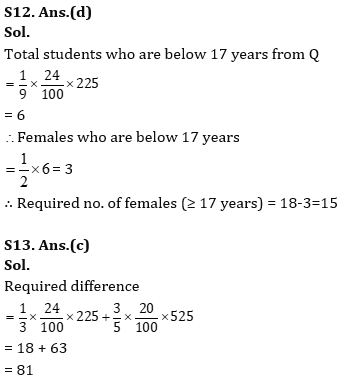
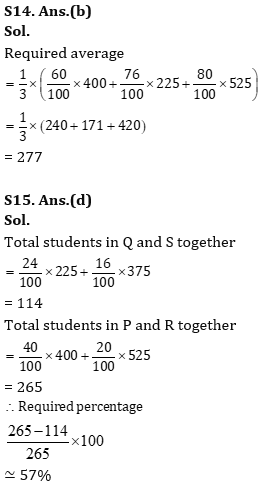
 .
.




 Data Interpretation Questions for SBI PO...
Data Interpretation Questions for SBI PO...
 Data Interpretation Questions For Bank E...
Data Interpretation Questions For Bank E...
 Quantitative Aptitude Quiz For Bank Main...
Quantitative Aptitude Quiz For Bank Main...





